Our train followed the Danube River through Hungary, Slovakia and into the Czech Republic. It reminded us a little of the upper Mississippi River. In Brno we had to get to the airport where we had planned to rent a car. We arrived only to find no one there at the car rental agency. After calling the phone number given us, they said they would be there at our reservation time and they were! We then drove to the little town of Třebíč where we had a hotel reserved. Once we found it, there was no one there! Again, we called and they said they would be there in 10 minutes and they were. Apparently we were the only guests!
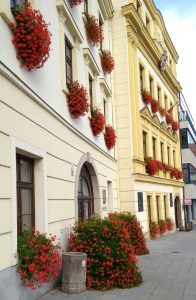
After a lovely breakfast, we drove to Pilsen (Plzeň in Czech). This city is famous for Pilsner, the style of beer first created there in 1842 and made possible by the city’s naturally soft water. It is the home of the Pilsner Urquell Brewery.
I learned that after the Communists took over Czechoslovakia in 1948, Pilsen was a hotbed of anti-communist activism. The Pilsen uprising happened in 1953 and the next year, a West German homing pigeon was lost near the Czechoslovak border. It returned two days later, bearing a strong anti-communist message, signed “Unbowed Pilsen.” The bird, named Leaping Lena, was taken to the United States where it was celebrated as a Cold War hero. It was in Pilsen where we met our friends Jon and Deb.
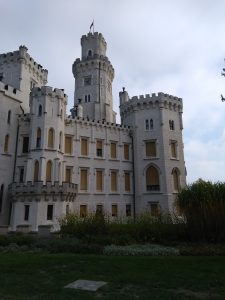
Together we went on a road trip to Çesky Krumlov with stops along the way at Písek, and Údraž where Deb’s great-grandfather was born. Another stop was Hluboká Castle. We marveled at how many of the rural roads were lined with apples that were ripe and dropping off the trees.
While searching for castles on Google maps, I had put a pointer on the map that I thought was a castle but when we arrived, it turned out to be a Faber-Castell factory! We subsequently learned that there are graphite deposits nearby and that pencils with the iconic yellow paint were first made in Czechoslovakia. We all ended up buying some high quality pencils that were made locally. Oh, and we did eventually find the castle we were looking for!
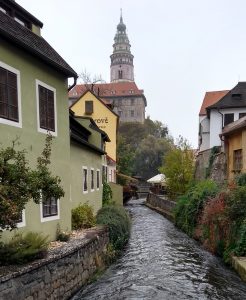
As we made our way through the countryside we noticed very few farmhouses, but occasional collective farms that are left from the soviet days. They all had long low buildings for housing people and animals. Many of them appeared to be in disrepair.
That evening we arrived in Çesky Krumlov which is the most picturesque little town. The Czech republic has a rich tradition of puppetry, and we visited a marionette museum there.
The next day we drove to Prague (Praha in Czech) where we visited Wenceslas Square where the Velvet Revolution of 1989 took place. This was when power was transferred peacefully from the Soviets to the people of Czechoslovakia.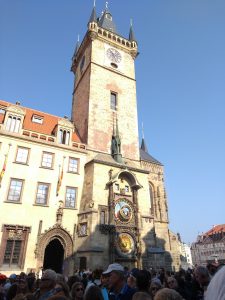
We walked around the old center of the city and saw the medieval astronomical clock that had just been refurbished and restarted a few weeks previously. We then crossed the river and walked up to the castle and the royal gardens. We were a little tired after that and decided to hop on a river boat for a short cruise on the Vltava River. Prague is known as the city of a hundred spires and we could see many of them from the river. The river is home to many swans that make for beautiful river scenes!
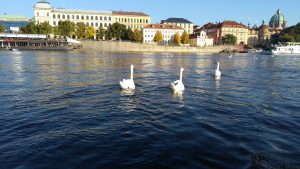
The next day it was time for us to go our separate ways, but it sure was nice to spend some time with Jon and Deb. Roy and I left for a four-hour train ride to Vienna which he covered in the previous post.
Happy Thanksgiving, Roy. Thanks for the travelogue.